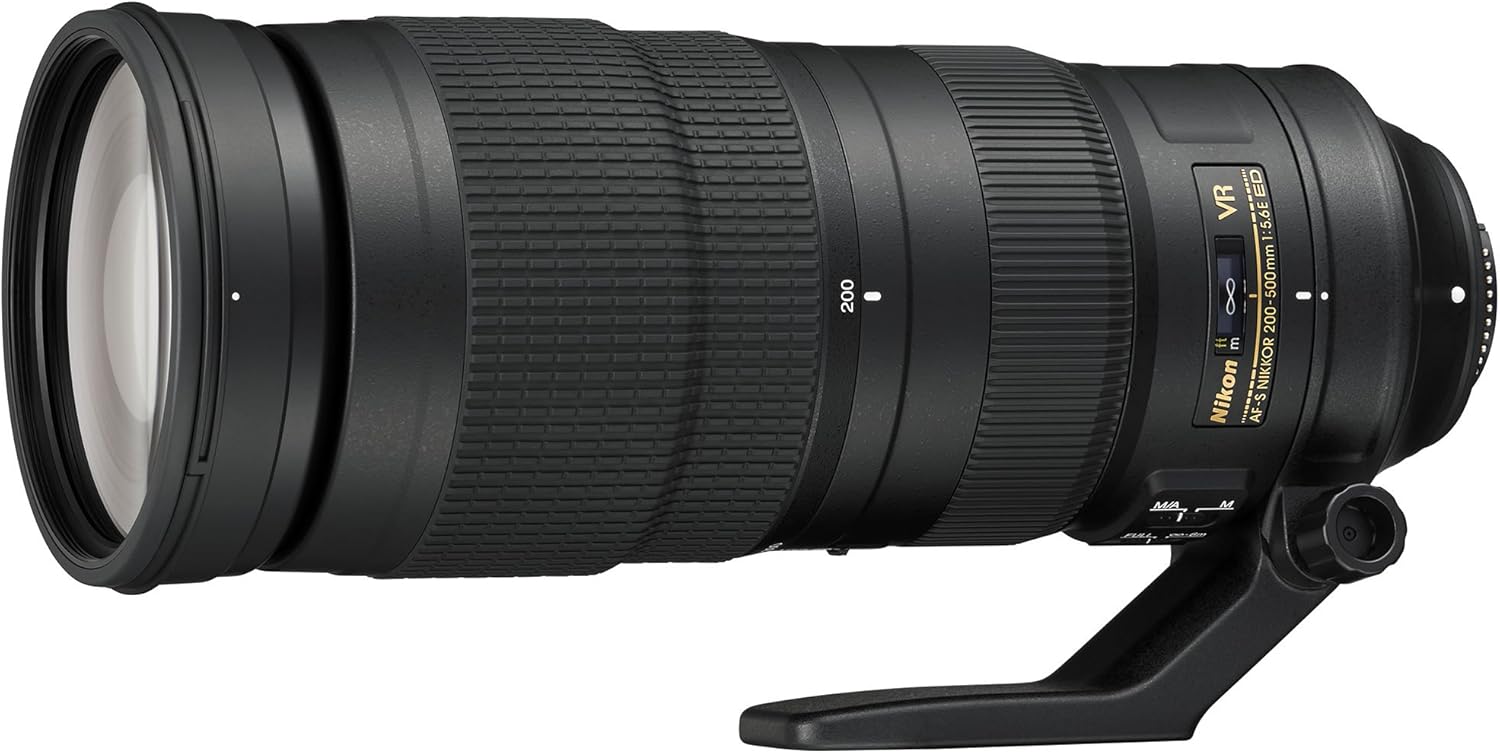About this deal
While I may have seemed casual about carrying it sometimes by the handle in the Galapagos, I actually had a safety strap on it at all times, and I’m glad I did. This extra weight is very noticeable when panning handheld and was one of the reasons I used a monopod. On my D1 (1999), D2Hs (2005), D70 (2004) and D200 (2005) and D40 (2006), everything works great, except that it only shoots at f/5. With the recently developed SPORT VR mode integrated into the VR system, this lens is ideal for photographing moving subjects such as birds in flight, or fast-paced sports.
This Nikon 200-500mm is very sharp, but it's difficult to get sharp images with long lenses because of their shallow depth of field, and atmospheric heat shimmer and seeing conditions easily can cloud results. It means we can shoot it in dim light and never need a tripod unless we're shooting time exposures or star trails. This makes it an ideal option for wildlife photographers who want to capture stunning images without breaking the bank.If this is about 6" (15cm) on your screen, printing the complete image at this same high magnification would result in a 50 x 75" (125 x 185 cm) print! This is because primes have larger glass areas, have better quality glass and wider apertures, therefore letting in more light helping with the auto focus amongst other things. The mode delivers a stable viewfinder image, and allows a continuous shooting frame rate similar to those that are achievable when VR is turned off. and there is no VR or AF, but manual focus is wonderful care of the FM3a's special split-image focus aid that doesn't black out. Put another way, if I were shooting the same 12-shot fast motion sequence handheld with both lenses, the 200-500mm will get a few less “in focus” shots than the 80-400mm, partly due to the weight causing me to move the focus sensor off the subject, partly due to the 200-500mm not reacquiring focus quite as fast as the 80-400mm (or the 200-400m f/4 in the same situation for that matter).
Indeed, that was true both for rough transport with the hood reversed as well as a lot of rough carrying over tough terrain, including bumping against lava rocks a few times. Autofocus: The AF speed and accuracy is much better than on the Nikon 200-500 and is the best from this brand I have used. What makes the Nikon 200-500mm even more appealing is that it delivers this extended reach at a fraction of the weight and cost of other super-telephoto lenses, like the Nikon 600mm f/4E FL ED VR (3810 g/8 lb 6. ED VR boasts a zoom-lock switch to keep it secure when it’s not in use, and a detachable tripod foot that helps stabilise the lens when using a tripod. Again sorry didn't know that, I also have the 200-500 and it's slow at focusing kind of thought the 200-600 would probably be the same.
After each outing where the lens gets dirty, I thoroughly clean the front element, outer lens barrel, and mount. Aperture decreases, which is a drawback, but the main issue is the autofocus becomes inconsistent and more challenging to use on DSLRs. With so many Arca-Swiss compatible tripod clamps and accessories out there, it is pretty much a standard now, especially among sports and wildlife photographers. I use a clear (UV) protective filter instead of a cap ( exactly like an iPhone) so I'm always ready to shoot instantly. When it comes to hand-holding, although as I have already said above, the three largest glass elements are located on the front of the lens, it still does not make the lens front-heavy.
It's also big and heavy, so get this 200-500 for airshows, birds, surveillance, intelligence gathering, sunsets and other long-range uses, and you'll still need your regular telephoto along with it.Also Nikon uses algorithms that detect you are panning and auto adjusts the VR to compensate in both modes, you don’t get to see this, it just happens. This value is achieved when: FX-format compatible lenses are attached to an FX-format digital SLR camera and zoom lenses are set at the maximum telephoto position. When attached to a DX-format digital SLR, the angle of view is equivalent to that of a lens with a focal length of 300-750 mm in FX/35mm format. On a crop the Nikon gives you 8° to 3° FOV a full frame is 12° to 5° FOV and the Sigma around 5° FOV on a crop. The lens is obviously not the fastest focuser, but claiming that it is good only for static subjects is not accurate either.
And in the rare cases when additional reach is needed, you can increase the AF-S NIKKOR 200-500mm f/5. While it's suitable for capturing subjects that aren't moving quickly, it may struggle with acquiring focus on fast-moving subjects, leading to missed moments you may have gotten with other lenses.It's swell for distant wildlife and sports, but not instantaneous like the world's best 100-400mm f/4 L IS II.
 Great Deal
Great Deal 